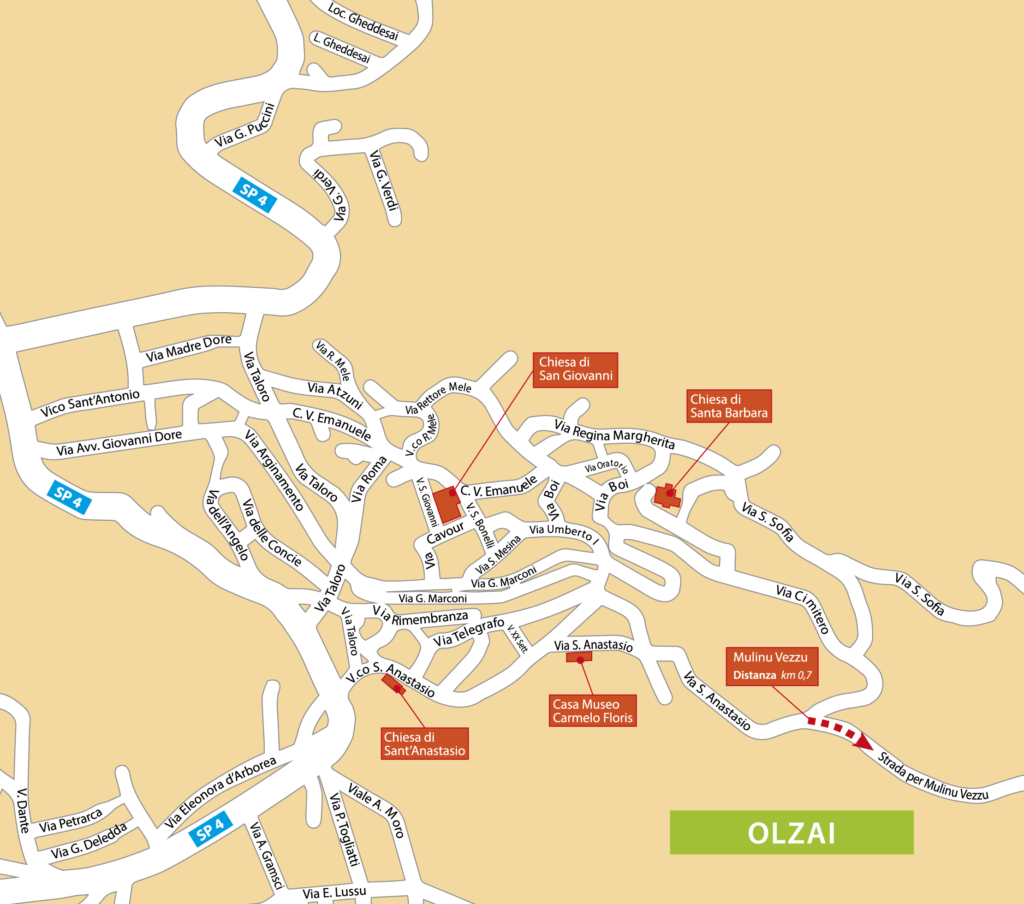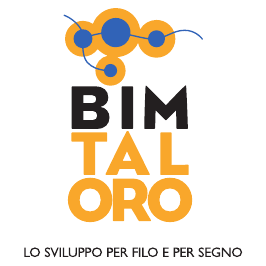Church of San Giovanni Battista
The church is located in the centre of the village where some narrow, steeply sloping alleys meet. The first nucleus, built in the 15th century as the oratory of the Saviour, was rebuilt around the middle of the 17th century, a period in which it became a parish in place of the church of Santa Barbara. Until the early decades of the 1900s, there was a fenced-in embankment in front of the entrance, which was later replaced with the current staircase with flowerbeds at the sides.
Its façade, which is quite simple and has a raised shape in the upper central part with respect to the two side wings, has a small rose window on top of it in red trachyte. The portal, in red trachyte as well, is decorated with two fluted columns whose capitals are inlaid with acanthus leaves and surmounted by a triangular tympanum in the centre of which is an aedicule with a statue of St. John the Baptist.
Inside, the church is divided into three naves marked by round arches, covered in the side chapels, three on each side, by ribbed vaults, while the central nave has a barrel vault in red brick, a finishing touch that, in 1874, replaced the previous decorated wooden roof.
The raised presbytery houses the marble altar built in 1896 as a gift from the rector Fancello. The 18th-century wooden choir opens right behind it; it is in inlaid walnut with nine stalls and the central chair surmounted by an image of the Agnus Dei, the emblem of the church. The coat of arms of the four Moors is inlaid on the side stalls on the right, and the coat of arms of Cagliari with two crosses and two towers is inlaid on the stalls on the left.
In the first chapel to the left of the entrance there is a 19th-century marble baptistery, the Dormitio Virginis is in the next one, while the third one is consecrated to St. Anthony the Abbot.
Of the three chapels in the right nave, the first shows a magnificent and valuable wooden altar with clear inlaid designs, stylistically consistent with the choir in the presbytery. At the top of the altar, the statue of Saint Ephysius is displayed in the niche on the left, exactly identical to that located in Stampace, in the centre there is a statue of St. Joseph and on the left one of St. Bartholomew.
The second chapel is dedicated to the Madonna with Child, while the following one, consecrated to St. Anthony of Padua, has an altar in polychrome French marble and, in two niches in the side walls, there is Saint Monica with St. Augustine and, straight on, the group of Saint Isidore by sculptor Guacci of Lecce. The Via Crucis is also exquisite; its panels are bas-reliefs made of red clay, finished using the encaustic technique.
The feast of St. John the Baptist, patron saint of the town, is on June 24th, and it takes place according to the ecclesiastical celebrations and the pagan rites of “compararatici” among friends and relatives on the night of the fires and the gathering of wild herbs.
Text by Laura Melis with the contribution of Lidia Siotto

 BIM TALORO
BIM TALORO